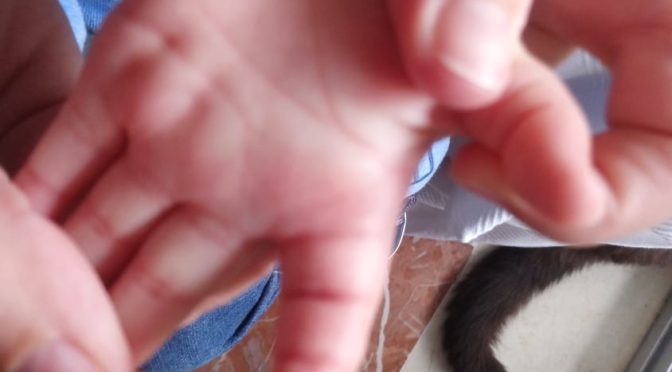A new diagnosis each month (6). What happens with my son´s finger?
A new diagnosis each month (6). What happens with my son´s finger?

The diagnosis of a clinical problem in a child is challenging for two main reasons. The first one because we have a tendency to think that a child can´t have a severe disease, part of the common ones such as appendicitis, trauma or choking. Also, in general, the parents
and the doctors try to find an easy explanation for the problem of the child, for instance a fall or a trauma. But, when, nor time or explanations resolve the problem, the parents need a real diagnosis for the problem.
A simple history, a complex solution
Everything started three months ago when Marcus´s parents noticed an increase in the size of the second finger in his left hand. At the beginning they thought that the problem was related with a trauma or a fall, even the pediatrician thought that the problem was produced during the moment of play. But, after three months without improvement it was clear that the problem was something important. After a visit to the traumatologist and two pediatricians, the name for the problem came to the light: an increase in the size of the second finger on his left hand, without an increase in temperature, and just a finger: Juvenile Idiopatic Arthritis.

From this moment the parents want the solution of the problem. After a diagnosis came to light there is a feeling that there is no time, the difficulties are putting down and then all the efforts are directed to look for a solution. And then, in the minds of the parents appeared one question: Who know about this problem and who is an expert in the subject?
Diagnosis is a step to action
It is not uncommon after a diagnosis is made, with a particular name, that immediately the family look for a treatment. We have now in Medicine a lot of therapeutic resources, but all of them share a percentage of uncertainty and side effects. In this case the indication was starting with Methotrexate, a compound with adverse effects even in a small dose. In a second step if there is no improvement, the indication is the use of local steroids. At this moment the presence of a professional with real experience is a real value to solve the problem of a patient and his or her family.
#Question: What tests do you think must be done to avoid a serious problem after this diagnosis?
If you want to know the answer click here
Bibliography
International League of Associations for Rheumatology classification of juvenile idiopathic arthritis: second revision, Edmonton, 2001.AUPetty RE, Southwood TR, Manners P, Baum J, Glass DN, Goldenberg J, He X, Maldonado-Cocco J, Orozco-Alcala J, Prieur AM, Suarez-Almazor ME, Woo P, International League of Associations for Rheumatology SOJ Rheumatol. 2004;31(2):390.
Author: Lorenzo Alonso, MD. Foro Osler



